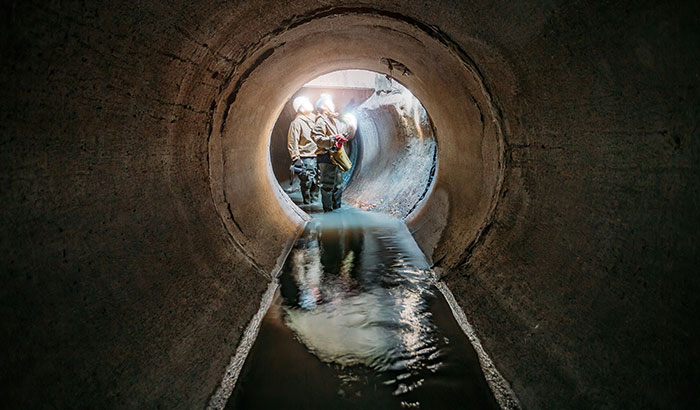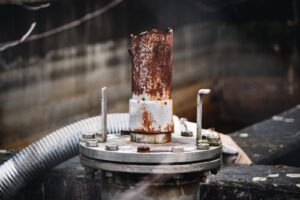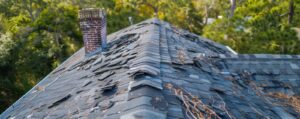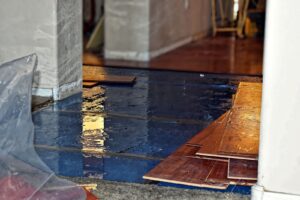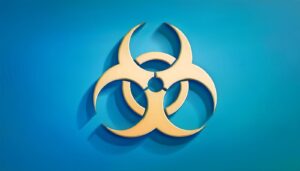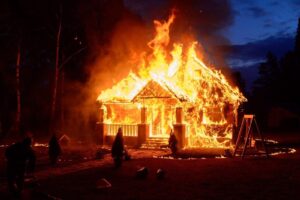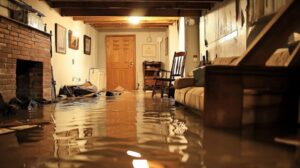One of the worst parts of being a property owner is dealing with home issues when they arise, the worst of which might just be sewage damage.
Sewer backups are highly unpleasant and can end up being very expensive. Several things can contribute to blockages that result in backups, such as improper waste disposal (flushing items that should not go down the toilet), tree roots, old sewer systems, tree roots, and larger municipal sewer difficulties. When your sewer line becomes blocked, wastewater can back up, come up out of the drains, and make its way into your home.
As you can imagine, the countless viruses, bacteria, and other pathogens found in sewage waste can be extremely toxic and harmful the instant it seeps out of the drains and into your home. In addition to smelling absolutely horrific, sewage backups can lead to countless illnesses and diseases for people and animals that are not adequately protected (i.e., wearing proper safety gear).
Avoiding sewage damage is essential to the health and wellness of the people [and animals] living there, as well as the overall condition of your property. Having a thorough understanding of sewage backups, sewage damage, its potential causes, and associated risks is key to being prepared and preventing this disaster from occurring.
If you would like to learn more about sewage damage, ways to prevent backups, sewage damage cleanup, and more, continue scrolling below.
What Are Sewer Backups?
Sewage backups, also called sewer backups, happen when subsurface wastewater comes back through the sewer system or drainage pipes into your home. This can occur with a sink, shower, or toilet. Sewer backups can cause various issues, such as grease or oil buildup, food blockages, toilet paper, tree roots, feminine or sanitary products, pipe deterioration, and more.
An overabundance of downspout water, groundwater, or stormwater that cannot be diverted appropriately can actually also cause serious issues within the home, such as sewer backups, since the volume of water can overwhelm the drainage system. The private waterline on your property is often the culprit. But sometimes, the sewer system overflows and backfills into the public line and homes.
Sewer Backups: City vs. Residential Responsibility
Generally speaking, the city becomes responsible for sewer lines at the main sewer line that typically sits just beyond your private property boundaries. In most cases, you, the homeowner, are responsible for any lines on your property, including upper and lower lateral lines. While this line usually extends past your property, the homeowner is still responsible until the main sewer line, where city responsibility kicks in.
Causes of Sewer Backups
The main causes of sewer backups and sewage damage in the home are typically homeowner or tenant mistakes. However, in the vast majority of cases, sewer line backups happen from one of the following:
- Flushing items down the toilet that should go in the trash, such as diapers, feminine products, tissues, paper towels, flushable wipes, cotton swabs, and more.
- Clogging pipes with grease, oil, or fat buildup, eggshells, fruit and vegetables, and coffee grounds.
- Excess water being diverted to sewer systems.
- Planting trees, bushing, and other large root-producing plants too close to drains and sewer lines could result in root infiltration.
- Old pipes and aging systems have begun to deteriorate (this can lead to fractures or mineral buildup within lines).
10 Tips for Preventing Sewer Backups and Sewage Damage in Your Home
As mentioned above, sewer damage cleanup is among the nastiest jobs and messes. Of course, being prepared for one of these disasters is wise; however, there are things you can also do to avoid these incidents from happening in the first place. Between being a homeowner, property manager, and a renter, there are things each group can do to prevent sewer backups.
The truth is, the more you know and the closer you follow these tips, the better your chances of avoiding sewer damage altogether. Even still, there are zero guarantees, and backups can occur even when you take every precaution out there.
Here are ten tips that can help prevent sewer damage:
- Only flush toilet paper and human waste. We cannot stress this one enough! Nothing else should be flushed down the toilet, especially not diapers, wipes (yes, even the flushable ones!), sanitary products, paper towels, or tissues.
- Keep pipes clear of roots, and never plant bushes or trees near sewer lines and laterals.
- Line old pipes and replace them when necessary.
- Avoid putting fatty, greasy, or oily foods down the drain. In fact, any food down the drain isn’t the best idea. Even if you have and use a food disposal, it can cause issues down the line (literally!). Scrape as much food waste (egg shells, strawberry tops, etc.) into the garbage and only use your disposal when necessary.
- Bring in a professional to install an exterior clean-out.
- Avoid connecting downspouts, sump pumps, french drains, and other flood control systems to your sewer line.
- Have a professional install a backwater valve. These valves are placed directly into the sewer line and automatically close if a backup occurs from the main sewer line. As if preventing backups weren’t reason enough to get a backwater valve, you might also be eligible for a rebate and insurance premium savings!
- Elevate the house drain.
- Hire a professional to conduct a yearly inspection of your plumbing and sewer lines. They will use a sewer camera to look for holes, cracks, and obstructions like tree roots.
- Install a sump pump if your house is in a low-lying area where flooding is typical. Sump pumps can help remove accumulated water in a basement or crawl space. Depending on usage, sump pumps can last up to 10 or 15 years.
7 Common Signs of Sewage Damage
The phrases “out of sight, out of mind” and “ignorance is bliss” might be a homeowner’s dream, but that’s not the reality of owning a property. Hidden problems are a property owner’s worst nightmare. If there’s a problem, especially a sewage-related issue, it’s essential for homeowners to know so they can act fast. Problems like this need to be addressed right away since they can lead to other issues like property damage, increased utility bills, and serious health hazards.
To help ensure you don’t end up with serious sewage damage, it’s important to know the signs of a damaged sewer line. Here are seven signs of sewage damage:
- Clogs and Backups — If you have more than one clogged drain spilling wastewater onto the floors, you could be experiencing a sewer line issue.
- Sewer Gas Odor — Sewer gas odor is one of the most obvious (and unpleasant) signs you might be dating with a sewage issue. When your plumbing is working correctly, there shouldn’t ever be a smell coming from your drains.
- Slow Drainage — A slow sink, tub, shower, or toilet drain could indicate a sewer line issue, especially a blockage.
- Soggy Yard — Do you have a soggy lawn that is foul-smelling? It’s a good possibility that you have a broken sewer line. These issues can cause sinkholes to form around the damaged area, making these areas in your yard super wet and unusable until repairs are made. Moreover, these conditions can attract insects and rodents, spreading disease and filth.
- Green, Lush Areas — Oppositely, broken sewer lines could result in beautiful, lush, thriving spots in your lawn right around the break while the surrounding areas turn brown and die. Wastewater can sometimes be an effective fertilizer; however, it is highly toxic and can result in serious health issues when the soil is disturbed.
- Mildew, Mold, and Must — Wet or stained areas on your walls, ceiling, or floors are obvious signs of a leak, including a sewer line issue. If ignored, these issues can lead to mold and mildew that can rapidly spread, leading to property damage. Moreover, fungi spores can cause allergies to flare and other health problems.
- Cracks in Walls or Slabs — Settling and shifting ground can cause cracks in walls and slabs. Cracks can also be caused by a broken sewer line.
The Dangers of a Sewer Backup
Depending on the extent of the disaster, sewer backups can cause an incredible amount of damage to your property and personal belongings. When wastewater is not cleaned up quickly and properly, mold will likely develop in your house. It also can contain parasites, bacteria, viruses, and other toxins that could make you and those you love extremely sick.
In addition to the hazardous and intensive sewage damage cleanup process, it can be shockingly expensive to repair, restore, or replace flooring, cabinets, and other home fixtures.
The Price of Sewer Damage
Sewer backups can be fairly expensive. Even in cases where dwelling or personal belongings damage doesn’t occur, it can be costly. On average, a sewer backup cost can estimate between $2,000 and $10,000. However, costs can range from minor instances at $1,000 to extreme cases at $50,000. Once blackwater enters the home, costs usually tend to climb thanks to the severe damage it can cause.
Thankfully, many home insurance policies have sewer backup coverage that helps cover the costs of accidental direct physical loss to your property. Exact coverage parameters vary from provider to provider and policy to policy.
While shopping for homeowner’s insurance, make sure to look at what your sewage damage coverage options are. Because sewer-related disasters tend to be quite pricey, it’s probably smart to have coverage — especially if you live in an older house or an area with dated sewer lines.
What To Do After a Sewer Backup
Sewer backup disasters can cause immense damage to your property and belongings if not addressed immediately. To avoid mold, disease, and a heftier price tag, call the professionals to promptly start the sewage damage cleanup process.
Thankfully, there are some things you can do to prevent further damage and limit toxic exposure after sewage damage until the experts get there:
- Turn off power to affected areas in your house.
- Disinfect solid floors, walls, and other contaminated surfaces, including pipes and plumbing fixtures.
- Use a wet vac to remove waste.
- Clean ductwork.
- Remove and trash absorbent materials such as carpet, drywall, towels, bathroom rugs, etc.
If you do have insurance, before you start cleaning up, document all of the damage by taking pictures and video footage of all affected areas. Call your insurance company to create a claim and follow their instructions exactly. Once they give you the go-ahead to start cleaning up, you’ll want to call the professionals to start the sewage damage restoration process.
Is Your Home Affected by Sewage Damage? Call Total Flood & Fire Restoration Today!
Plumbing has become an integral part of our daily lives, so blocked sewer lines and sewage damage can be frustrating, and Total Flood & Fire Restoration can help!
Blocked sewer lines can cause serious problems, including electrical issues, property damage, and major health hazards. Suppose you have a blocked sewer line in your home or business. In that case, it’s essential that you get expert help from a trusted professional who can determine the cause of the blockage and handle the sewage damage restoration process in a safe, sanitary, and timely manner.
If you’re experiencing a blocked sewer line, take action now! Call Total Flood & Fire Restoration today and let our trained, licensed, and insured specialists take care of it. Our knowledgeable team will clean and disinfect your space, flush out necessary plumbing fixtures, and quickly restore your home or office so you can get back to your normal life.
In addition to sewage damage restoration, our team specializes in floods, fire and smoke damage, mold removal, and more! We serve Salt Lake, Davis, and Utah counties.
Contact our team today!

